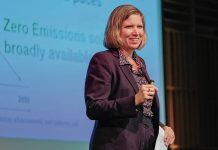By Mickey Kim
The NFL Draft and securities markets both provide researchers with huge amounts of data for analyzing “judgement under uncertainty” and “decision under risk.” Research leads to understanding how NFL general managers and investors make choices when “resources are at stake” and “the outcome is unknown.”
In other words, you discover how forecasts are made and how they impact results.
Richard Thaler of the University of Chicago’s Booth School of Business (my alma mater) won the Nobel Prize in 2017 for his pioneering work in the field of behavioral economics because “by exploring the consequences of limited rationality, social preferences and lack of self-control, he has shown how these human traits systematically affect individual decisions as well as market outcomes.”
According to classic economic theory, individuals are like Mr. Spock—perfectly rational and capable of unemotionally analyzing and acting on all relevant data. In reality, Thaler asserts, humans (NFL general managers and investors) are more like Homer Simpson—highly emotional, lacking in self-control and influenced by all sorts of biases and “supposedly irrelevant factors” (“SIFs”).
Not only that, humans act on these biases in irrational and predictable ways, often leading to poor decisions.
NFL general managers have to forecast how a player’s college performance will translate to a professional career. Quarterback is the most highly valued position, both in terms of determining wins and compensation (percentage of a team’s salary cap). Choosing a “franchise quarterback” is a “do or die” proposition, so it’s instructive to examine how teams have drafted the position.
The 1983 draft is still considered the “gold standard” for quarterbacks, as six were selected in the first round, including future Hall of Fame inductees John Elway (Colts/Broncos), Jim Kelly (Bills) and Dan Marino (Dolphins). However, it’s extremely important to note Todd Blackledge (Chiefs) was selected ahead of Kelly and Tony Eason (Patriots) and Ken O’Brien (Jets) were chosen ahead of Marino, the next to last player drafted in Round 1.
Baltimore’s Lamar Jackson was the fifth quarterback selected in 2018 and was unanimously named Most Valuable Player in just his second season. The Eagles’ Jalen Hurts was also the fifth quarterback selected (2020) and just signed the richest contract in NFL history. The Patriots selected Tom Brady in the sixth round in 2000 (No. 199), the seventh quarterback selected (behind such luminaries as Chad Pennington, Giovanni Carmazzi, Chris Redman, Tee Martin, Marc Bulger and Spergon Wynn).
Thaler and Wharton’s Cade Massey wrote “The Loser’s Curse: Overconfidence vs. Market Efficiency in the NFL Draft” because they were fascinated by teams paying a king’s ransom of current and future draft picks to move up.
In 2012, Washington thought Robert Griffin III was their “can’t miss” franchise quarterback and gave the Rams three first-round picks and one second-round pick to move up to No. 2. In 2017, the Bears swapped their pick at No. 3 plus three more premium picks to the 49ers to move up a single slot to No. 2, picking Mitch Trubisky over Patrick Mahomes (picked by KC at No. 10).
Thaler and Massey cited five factors, also applicable to investing. First, people are overconfident in their abilities to differentiate player potential (e.g., the first quarterback selected ends up better than the second only 56 percent of the time). Second, people make forecasts that are too extreme (e.g., “the next Peyton Manning”). Third, the “winner’s curse” says the one bidding highest for a coveted player is likely overpaying. Fourth, the “false consensus effect” means a team falling in love with a certain player “knows” every other team also wants him. Fifth, teams are afflicted with a “present bias,” obsessing over the short term and irrationally valuing current-year picks much more highly than future draft picks.
NFL teams consistently place excessive value on high draft picks and routinely overpay, in terms of current and future picks, to move up. Teams with a top pick should consider trading it for multiple lower picks from a team desperate to move up. The more picks you have, the better chance you have to get lucky.
Bryce Young (Alabama), C.J. Stroud (Ohio State), Will Levis (Kentucky) and Anthony Richardson (Florida) are the top quarterbacks in this year’s draft. The Panthers are in the “desperate” camp and traded two first-round and two second-round picks plus D.J. Moore (first wide receiver selected in 2018) to the Bears (under new management and apparently comfortable with quarterback Justin Fields (No. 11 pick in 2021) for the Bears’ overall No. 1 pick.
When I asked Professor Thaler his opinion of the trade, he said “the Bears were smart to trade the pick and they seem to have gotten a good price for it. The only case in which it makes sense to use the first pick rather than trade it is if you are taking a quarterback. The Bears already have Fields and while he has not proven himself yet, there is no reason to think the first pick this year will be better. As for the Panthers, they need some luck to make this trade pay off.”
Mickey Kim is the chief operating officer and chief compliance officer for Columbus-based investment adviser Kirr Marbach & Co. He may be reached at 812-376-9444 or [email protected].





